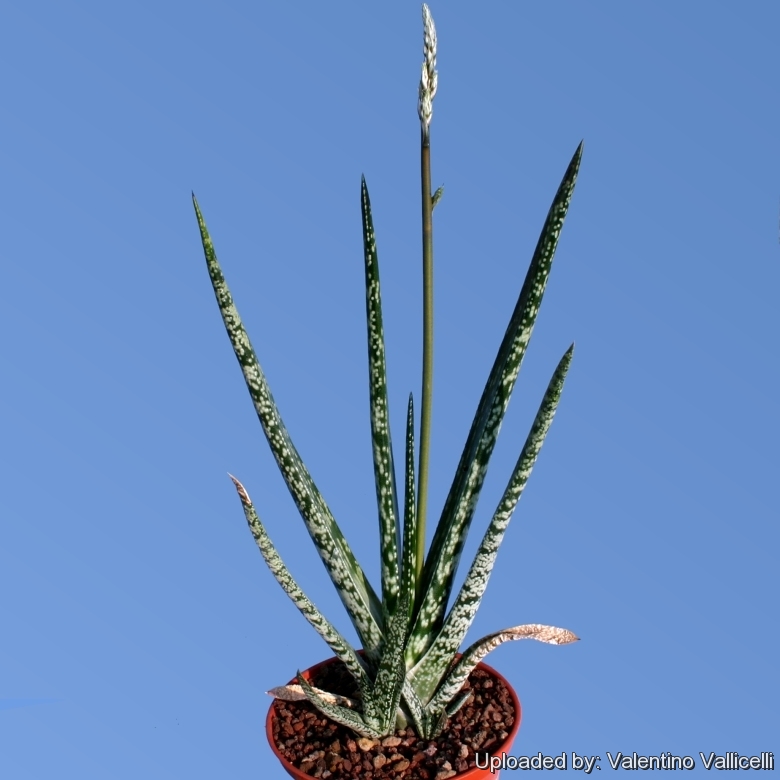
Gasteria pulchra Photo by: Valentino Vallicelli
It is a very decorative, tall, succulent with long sword-shaped, marbled foliage.
Origin and Habitat: South Africa (Eastern Cape)
Synonyms:
See all synonyms of Gasteria pulchra
back
Accepted name in llifle Database:Gasteria pulchra (W.T.Aiton) Haw.Syn. Pl. Succ. 86. 1812Synonymy: 8
back
Common Names include:
ENGLISH: Cow Tongue
Description: Gasteria pulchra is a very decorative, upright, solitary or offsetting shrubby succulent with narrow, finger-like, marbled foliage which taper to a sharper point and is densely blotched with white. Will form a tight clump. However different clones may vary in leaf size, shape, marking, and growth habit.
Stem: Very sort (subacaulescent).
Rosettes: Columnar with up to 15 sub-distichous leaves.
Leaves: More or less vertical 20-30 cm tall, narrow 1,3-2,5 cm wide at the base, rigid, straight, long-ligulate, ensiform/acinaciform . The leaves in section are unevenly triangular flat on the upper side, rounded often with 2 keels beneath. They are glabrous, glossy, grey-green to dark green (in intense light reddish-green) and beautifully marbled with conspicuous bright creamy-white spots that are smooth or slightly raised and warty and frequently merge in traverse irregular crossbands giving a even more brighter appearance. Apex attenuated, acute/mucronate. Margin horny, white.
Flowers: Approximatively 1,8 cm long, orange to pinkish-red born on an erect inflorescence up to 90(-150) cm tall, the petals have a greener mid strip.
Blooming season: Spring to summer.
Remarks: Gasteria pulchraSN|655]]SN|655]] resembles Gasteria acinacifolia which has much taller leaves and an inflorescence not so erect.
Bibliography: Major references and further lectures
1) Stuart Max Walters “The European Garden Flora: Pteridophyta, Gymbospermae, Angiospermae-Monocotyledons” Cambridge University Press, 1984
2) Urs Eggli “Illustrated Handbook of Succulent Plants: Monocotyledons” Springer, 2001
3) Pauline Bohnen “Flowering plants of the Southern Cape” Still Bay Trust, 1986
4) John C. Manning, Colin Patterson-Jones “Jewels of the Veld” Struik, 2004
5) John (John C.) Manning “Field guide to fynbos” Struik, 2007
6) Hermann Jacobsen “Abromeitiella to Euphorbia” Blandford Press, 1960
7) Diana Morgan “Succulents for Mediterranean Climate Gardens” Rosenberg Publishing Pty, Limited, 2004
8) Werner Rauh “Die grossartige Welt der Sukkulenten” t. 68 1967
9) Werner Rauh “The Wonderful World of Succulents: Cultivation and Description of Selected Succulent Plants Other Than Cacti” Smithsonian Institution Press, 1984
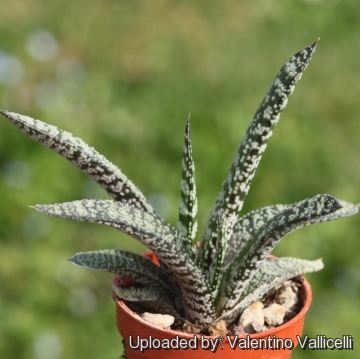 Gasteria pulchra Humansdorp, Eastern Cape, South Africa. Photo by: Valentino Vallicelli
Gasteria pulchra Humansdorp, Eastern Cape, South Africa. Photo by: Valentino Vallicelli Gasteria pulchra Photo by: Cactus Art
Gasteria pulchra Photo by: Cactus Art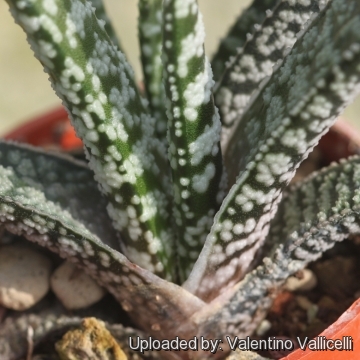 Gasteria pulchra Photo by: Valentino Vallicelli
Gasteria pulchra Photo by: Valentino Vallicelli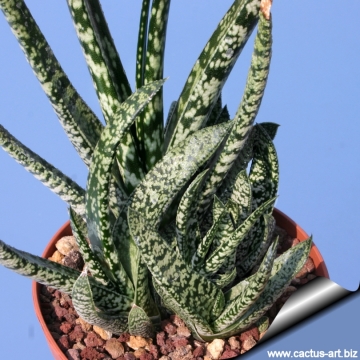 Gasteria pulchra Photo by: Cactus Art
Gasteria pulchra Photo by: Cactus Art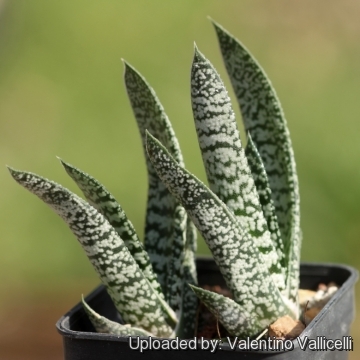 Gasteria pulchra Photo by: Valentino Vallicelli
Gasteria pulchra Photo by: Valentino Vallicelli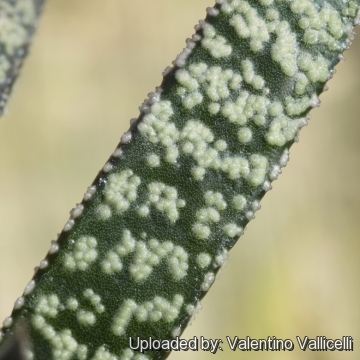 Gasteria pulchra Photo by: Valentino Vallicelli
Gasteria pulchra Photo by: Valentino Vallicelli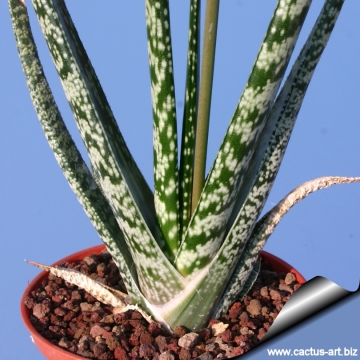 Gasteria pulchra Photo by: Cactus Art
Gasteria pulchra Photo by: Cactus Art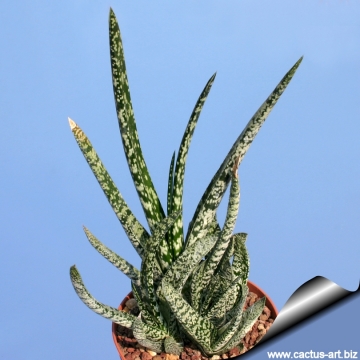 Gasteria pulchra Photo by: Cactus Art
Gasteria pulchra Photo by: Cactus ArtCultivation and Propagation: Gasteria pulchraSN|655]]SN|655]] is of easy culture which makes it a good houseplant and can be an excellent subject for the beginning gasteriaphile (it can grow easily on window sills, verandas and in miniature succulent gardens where they are happy to share their habitat with other smaller succulent plants, or in outdoor rockeries)
Growth rate: They are relatively fast-growing plants that offsets freely to form small clusters quickly.
Soil: It is tolerant of a wide range of soils and habitats, but prefers a very porous potting mix to increase drainage. A non-acid soil is ideal. You can grow a plant in a 10-15 cm pot for years and have perfectly happy plants. For best results, use a shallow pot.
Exposure: Need light shade to shade, but will take full sun part of the day. (with some sun exposure the leaf develops a nice reddish tint and remain compact) During the hot summer months, the soil should be kept moist but not overly wet.
Watering: During the hot summer months, the soil should be kept moist but not overly wet. During the winter months, water only when the soil becomes completely dry. Wet soil quickly causes root and stem rot, especially during chilly winter months. No water should ever be allowed to stand around the roots. Low ambient humidity is always needed.
Feeding: The plants are fertilized only once during the growing season with a balanced fertilizer diluted to ½ the recommended strength.
Hardiness: During the winter months, water only when the soil becomes completely dry. Frost hardy to -1°C (Or less). Gasteria pulchraSN|655]]SN|655]] is among the rather limited number of plants which can hold their own in overheated apartments and homes.
Pest and diseases: Rot is only a minor problem with Gasteria if the plants are watered and “aired” correctly. If they are not, fungicides won't help all that much. Incorrect watering, poor drainage or too much shade can lead to attack by pests and diseases. Care must be given in watering, keeping them warm and wet while growing, and cooler and dry when dormant.
Remarks: Gasterias are best planted in a shaded and airy part of the greenhouse, and not too close to the glass roof or sides of the house as the plants can overheat during hot spells.
Propagation: Gasterias are easily propagated by the removal of offshoots or by leaf cuttings in spring or summer. To propagate by leaf cuttings, remove a leaf and let it lie for about one month, giving the wound time to heal. Then lay the leaf on its side with the basal part buried in the soil. This leaf should root within a month or two, and small plants will form at the leaf base. They can also grown from seed.
Your Photos

by Cactus Art



















